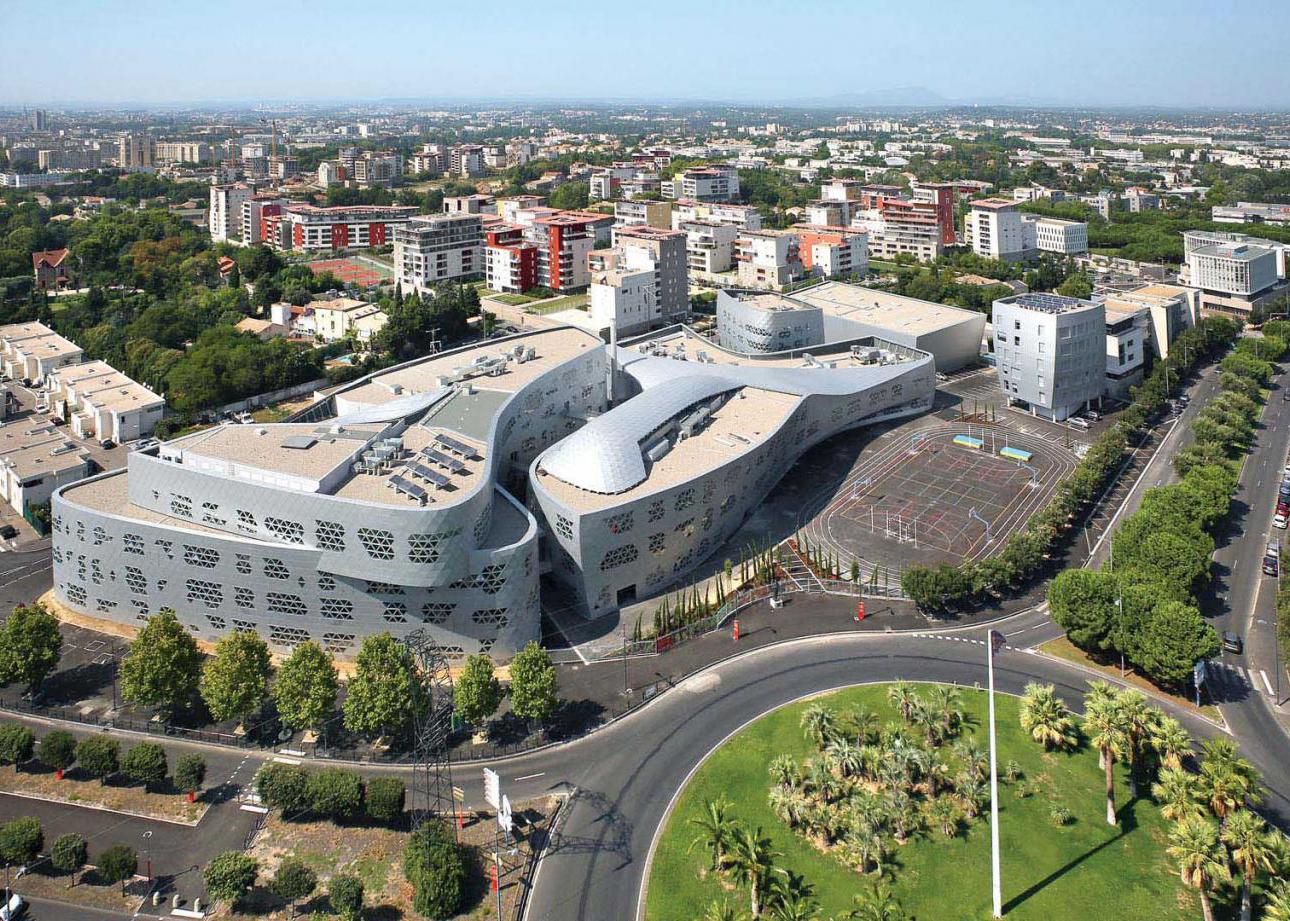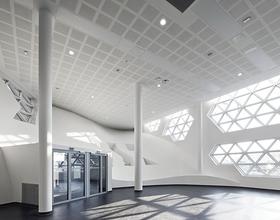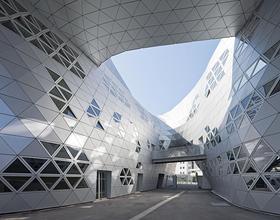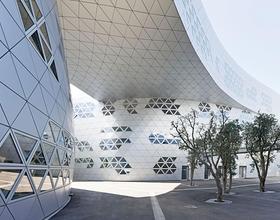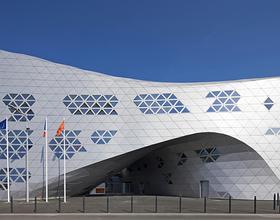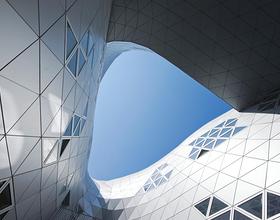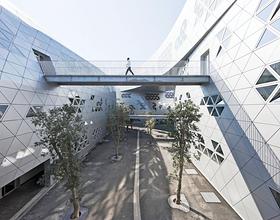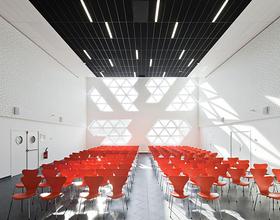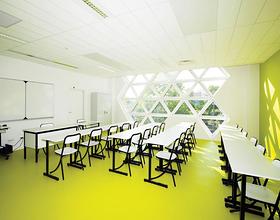GEORGES-FRECHE SCHOOL OF HOTEL MANAGEMENT
-
Built on 3.95 acres in the ZAC Port Marianne area to the East of Montpellier, the hotel-school Lycée Georges Frêche transforms the landscape and provides it with a distinct urban identity.
Massimiliano and Doriana Fuksas’ project, which is developed horizontally, comes across as a single entity. It has a formal diversity, compact volumes and sculptural shapes. The volumetric complexity, which can be seen even inside the building, gives every room its own spatial individuality. The entrance for the students and the professors is through an arch while the entrance for the clients is on an opposite side. The two buildings that form the edifice make up the sculptural mass around which the gym, the students’ residence and the management’s housing gravitate.
The first building, situated on the Titien Road, has three floors and includes: the multi-purpose room, the exhibition gallery, the administrative offices, the classrooms and the canteen that has exits leading towards the recreational areas outside.
The second building is distinguished by its Y form and is on two floors. Here, there are the spaces for the vocational teaching as well the areas dedicated to the hotel and the gastronomic restaurant: a hotel that is open to the public (12 rooms, 6 of which are two/three star, 4 four star and 2 suites); three restaurants, one of which is a gastronomic restaurant (50 places), a brasserie and a teaching restaurant (200 places in total), a bread-making workshop and a pastry making classroom. The gastronomic restaurant, the brasserie and the 4 star hotel showcase the School’s excellence and are the most important areas of the Project.
The facades of the building have been constructed using 17,000 cases of anodized aluminum in triangular shapes. Each aluminum case is unique and bears its own specific bar code in order that it can be identified for its specific situation on the façade. The interaction between the facades reinforces the dynamic tension between the solid materials and the cavities, the light and the shadows, that are an inherent part of the projet. The geometric design of the aluminum “skin” is developed further to apply to the 5,000 triangular glass frames that are mounted on metal nets. Each of these is different.
The structure of the building is made from reinforced concrete. To reproduce the curves of the volumes, the project has used "shotcrete" technology.
Photo credits: Mydrone.fr, Moreno Maggi, Sergio Pirrone, Studio Fuksas
1870 Projects

